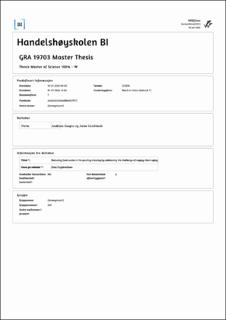| dc.description.abstract | The consumer-packed good industry is facing significant challenges of reducing vast amounts of food waste along its entire supply chain. Throughout the last few years, the food industry, consumers, and politics have become increasingly aware of the general problem of food waste. In the literature and at all levels of government, the causes of food waste and how to reduce it is discussed.
The focus of this thesis is on waste associated with product expiration. Product expiration is one of the dominant drivers of food waste and involves many actors in the food supply chain. This study aims to determine how to reduce food waste along the food supply chain by addressing one of the major challenges connected with product expiration - supply chain aging. In this context, supply chain aging is defined as the reduction in shelf life of goods caused by time spent throughout the supply chain.
To develop an actionable optimisation approach, a case study with three companies operating in the poultry industry (chicken producer, wholesaler, order processing and retail replenishment company) was conducted. Following the collection of appropriate data, targeted data analyses were conducted on food waste generation and its causes along their food supply chain. Based on this a mixed-integer linear programming model was constructed. Different scenarios concerning chicken availability were included in the model, followed by a sensitivity analysis.
The results showed that currently most food waste is generated at the retailers. Optimising the supply chain reduced product aging throughout the supply chain, increased product lifespan at the retailers on average by 20% and reduced food waste towards zero at the retail level. However, food waste at the producer increased significantly. But since in real life, the producer's production processes leftover chickens in a more flexible manner, this shift in waste generation is justifiable.
The results suggest that shelf life integrated planning can reduce food waste due to product expiration drastically. Nevertheless, further research is recommended to evaluate the model results on a larger scale to identify other aspect of this manifestation and its behaviours. | en_US |
